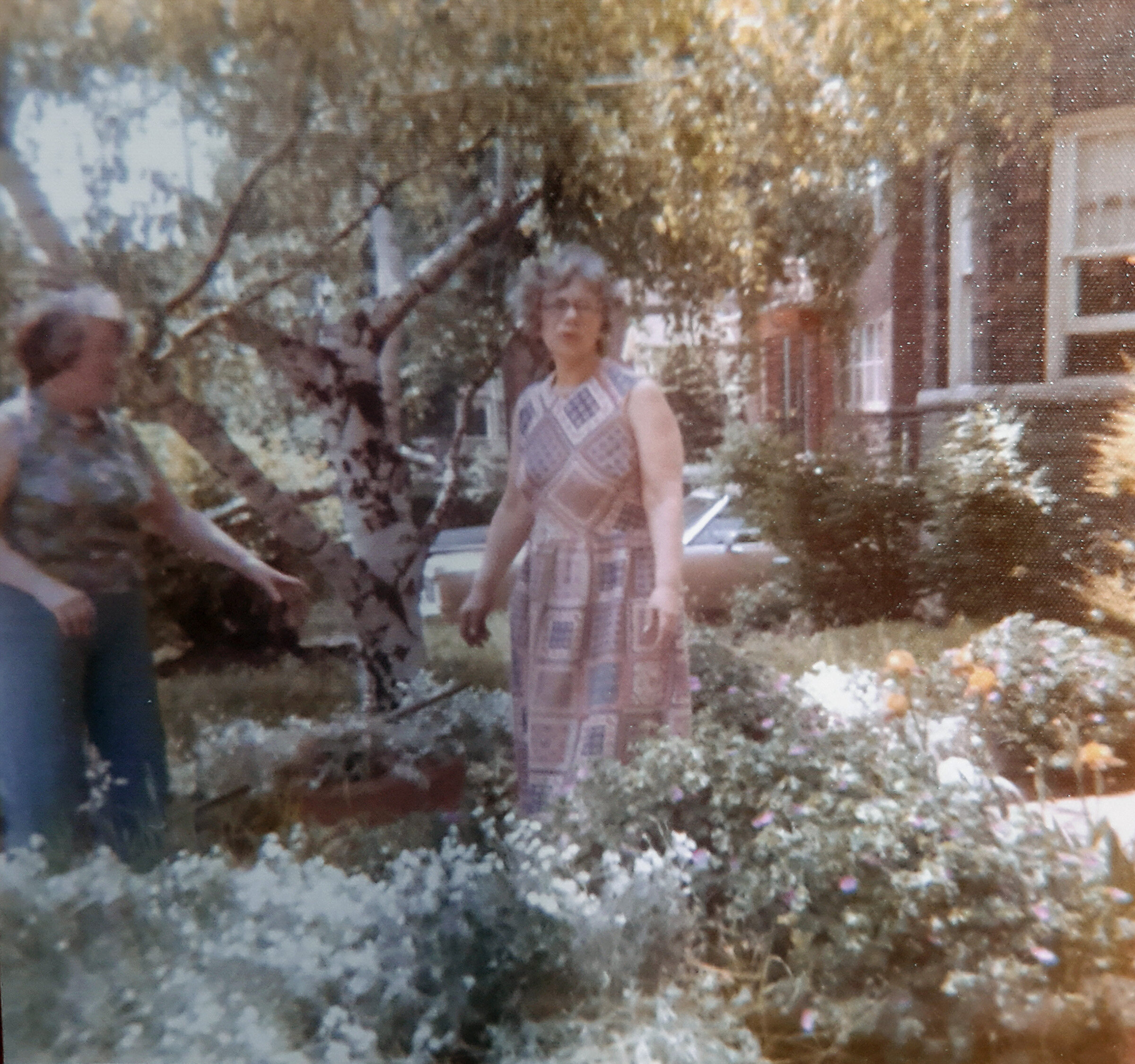Lois Adler
Photos from top left: Lois Adler at her house 24 Humewood Dr. in 1955, 1958, 1974, 1991, 1991 and 2018.
AUDIO INTERVIEW
SUMMARY
June 16, 2014
00:00 PERSONAL INFORMATION: Lois grew up at 24 Humewood Drive.
00:53 HEALTHCARE: There used to be a hospital at Winona and St. Clair.
02:00 IMMIGRATION: Her Grandmother came over from Poland in 1909. She lost her hearing in the flu epidemic.
03:03 PLACES OF WORSHIP: Her Grandmother was Orthodox Jewish and attended Shaarei Shomayim Synagogue at Winona and St. Clair (the “big one”); later she attended synagogue at Vaughan and St. Clair.
03:39 STREET LIFE: The children played on the street. There were few cars; people used public transportation, even when fairly young (9 - 11 years old).
05:05 HEALTHCARE: Dr. Lowry lived on Humewood Drive, next to Joe Mihevc, and had his practice in his basement.
06:10 SCHOOLS: Humewood Public School went from Kindergarten to Gr. 8; she went home for lunch and walked younger kids to school. There were separate entrances for boys and girls in the old Humewood School.
09:00 PARKS: She mentions playing in the parks; skating and tobogganing in Cedarvale Park.
09:51 ACTIVISM: Her parents were involved in the Spadina Expressway protests.
10:24 RAVINE: She remembers the homes along Cedarvale Ravine; playing there and on the footbridge.
11:07 STREET LIFE: She compares neighbourhoods in the area.
11:49 COMMUNITY SERVICES: Lois remembers playing in the grounds of Humewood House.
12:51 SHOPS: She mentions Cooper’s Fish and Chips, theatres, corner stores, variety stores, pool halls, pizzerias as well as the T.D. bank at present Starbucks’ location.
15:30 SCHOOLS: She remembers Oakwood Collegiate; it’s catchment area, her friends as well as school electives and gymnastics.
17:17 TRANSIT: She recalls taking the streetcar and subway; also talks about the streetcar barns, quality of service, routes to the west.
19:20 SHOPS: Lois talks about different supermarkets in the area (IGA, Dominion, etc.) and gas stations.
20:21 RESTAURANTS: There were some in the area, but Lois doesn’t remember them well. She mostly ate lunch at school.
21:30 SCHOOLS: Lois was pretty much unaware of the Catholic schools in the area.
22:37 DEMOGRAPHICS: Italians lived in the neighbourhood.
22:53 PERSONAL INFORMATION: Lois moved out of neighbourhood in 1971; came back in 1972 for one more year then later moved to Vaughan and St. Clair.
23:36 SHOPS: There used to be many small food shops in the neighbourhood including Health Bread/Open Window Bakery.
25:17 DEMOGRAPHICS: Lois discussed the ethnic background of friends who were mostly born in neighbourhood and were second generation. Most of them lived in houses and did not rent.
26:05 STREET LIFE: It was considered a safe community and doors were never locked. Residents used their front porches and Lois said “the streets were our home”. Memories of the people are what really stood out.
28:00 COMMUNITY SERVICES: There was a missionary home next to Humewood Park.
29:33 MEMORABLE PEOPLE: Lois recalls stories about important people in her life. Her best friend Esther was from Hungary and her next-door neighbour, Mr. Whitney, was from England. She played cards with him alone which probably wouldn’t be allowed to happen nowadays. She mentions that some famous people lived in the area including authors Marian and Howard Engel. George Luscombe and that Stephen Lewis grew up on Rushton. The head of the Waffle party, one of the Laxers, lived on Humewood Gardens.
36:50 ACTIVISM: Lois discussed the plan to develop Humewood Park. Cadillac Fairview planned to build large apartment towers there (between Humewood and Pinewood) in the late 70s. A lot of her neighbours were bought out, including homes towards St. Clair. When the development was defeated, the houses were sold to the City. The homes that were not required for the park were rented out and eventually sold back to the residents.
40:17 LANEWAYS: Some disputes about rights-of-way arose in the lanes around Humewood.
41:32 ACTIVISM: She discusses political engagement in the neighbourhood; Lois’ mother ran for alderman at one point; she names Ben Nobleton was and Phil White; not sure the community was a political neighbourhood, but her sister spear-headed the fight against the Mcdonald’s drive-through. Many members of the community got involved with that fight. Her sister was political - very active in keeping cars out and keeping the neighbourhood clean.
43:47 SHOPS / ENTERTAINMENT: Lois discussed the changes along St. Clair. The Crosstown Gas Station at Bathurst and St. Clair “was there forever”. She recalls the bowling alley on the southeast corner of Bathurst and St. Clair.
44:44 PARKS: Winston Churchill Park was a hangout and sports place for teens.
45:15 SHOPS: The Crosstown Gas Station lights were a nuisance to neighbouring apartment residents, but they were also a signpost in the neighbourhood.
46:20 SCHOOLS: Was St. Michael’s School the owner of land at Bathurst/St. Clair?
46:39 DEMOGRAPHICS: There is a discussion about why there were so many Jewish people in the neighbourhood. Shaarei Shomayim was a very big property. Her Father donated many pictures to the Toronto Archives.
48:42 LANEWAYS: Lanes were probably used for deliveries and for garages to maximize property frontage.
49:25 - Final wrap-up.





